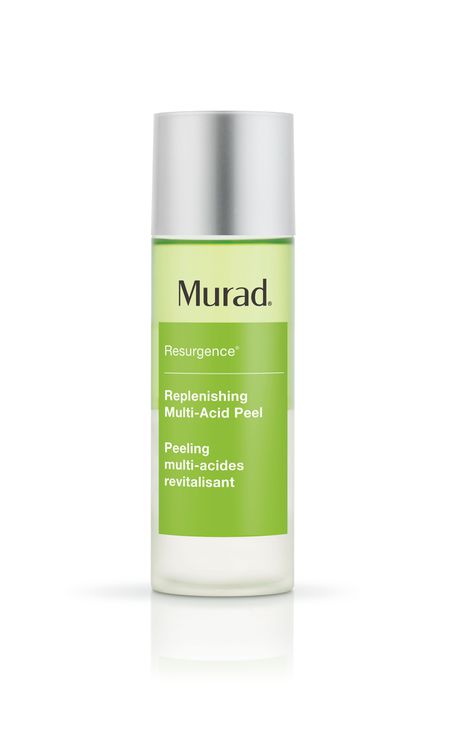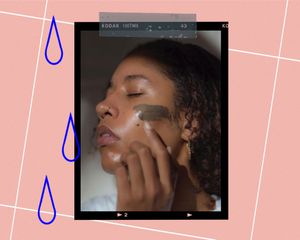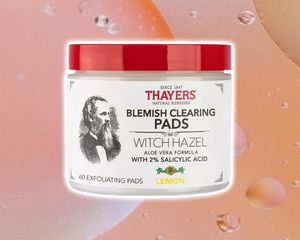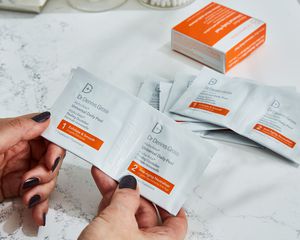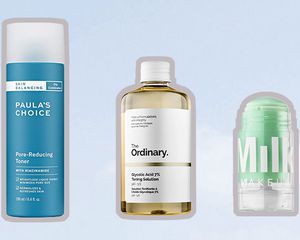
OHLAMOUR STUDIO / Stocksy
Ever wish you could peel back the top-most layer of your sun-damaged, acneic, line-filled skin to reveal a flawless, fresher, and brighter complexion? Chemical peels may be the answer you've been searching for. By dousing the skin with exfoliating acids to rejuvenate and revive dullness (among other skin issues), chemical peels are touted by many as the secret to glowing skin.
That said, there are certain nuances to be aware of when it comes to chemical peels—namely, your various options, what skin type they're meant for, and potential side effects. To help us learn everything we need to know about all of the chemical peel benefits, we tapped celebrity esthetician Shani Darden and board-certified dermatologist Anna Guanche.
Meet the Expert
- Shani Darden is a celebrity esthetician and founder of her eponymous skincare line.
- Anna Guanche is a board-certified dermatologist, beauty expert, and author based in Calabasas, CA.
Read on to learn about the most popular types of chemical peels and which one is right for you.
What Are Chemical Peels?
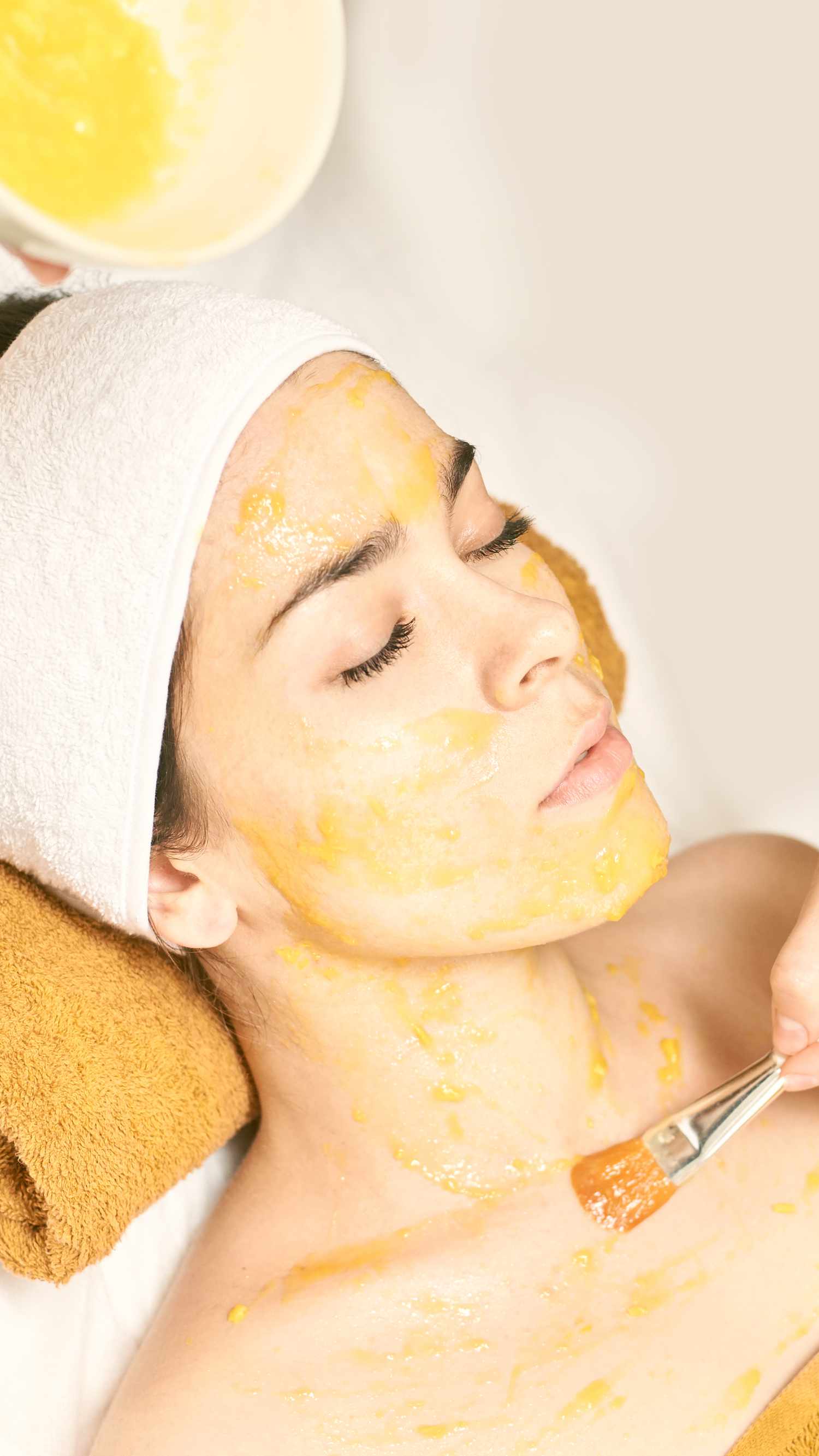
Guanche explains that a chemical peel is a method in which a chemical solution (usually an acid) is applied to the skin and removed after a certain amount of time. "During this time, the solution penetrates the uppermost layers of the skin allowing the peel to achieve a certain depth," she says. "This causes the skin to peel, lifting off sun damage, smoothing the skin, and even treating acne. The skin cells that peel off are naturally replaced with new ones." Standard ingredients in a chemical peel are alpha hydroxy acids (think: lactic acid, glycolic acid, tartaric acid, malic acid, and citric acid) along with the beta hydroxy acid acne-prone skin is all too familiar with: salicylic acid.
Key Ingredients
Alpha-hydroxy acids are a group of acid compounds, most often derived from plant-based sources. There are a variety of different ones out there, some of which include glycolic (derived from sugarcane) and lactic (derived from sour milk). While they all act on the surface of the skin as chemical exfoliants, they differ in size, and subsequently penetration and potency.
Here's how they work: the peel is painted onto the face by a dermatologist or trained cosmetologist. The stronger the formulation and the longer it's left on, the more powerful the "peel." The peel is then washed off and you may notice instant results.
What Are the Benefits of Chemical Peels?

Maskot / Getty Images
Both experts agree that chemical peels are brimming with skin-loving benefits.
- Prevents acne: "Chemical peels help with acne because they lower the pH of the skin, making bacteria uncomfortable and unable to survive," notes Guanche, who says that peels are suitable for most types of acne. "They help remove the surface skin debris leading to a healthier complexion with less clogged pores."
- Improves efficacy of other skincare products: Because peels remove the top layer of skin, it's able to help other products you put on your skin penetrate deeper. This is especially helpful if you're pimple-prone and are slathering on acne treatments.
- Refines fine lines and wrinkles: "A peel will help to remove dead skin that has settled into fine lines, making them less visible," says Darden. "A medium-depth peel will help the most with wrinkle refinement."
- Reveals clearer, glowing skin: Guanche explains that chemical peels remove the flaky, irregularly-attached dead skin cells from the face, leading to a compact stratum corneum that reflects a beautiful glow. "In addition, there is a slight inflammatory component that may occur, and this creates a collagen boost when healed," she adds.
Types of Chemical Peels
There are three basic types of peels, all which are formulated with acid.
Glycolic Peels
If you are looking to replace the age-related dullness on your skin with brightness, a glycolic peel may be your best bet. "Glycolic acid is an alpha hydroxy acid that helps to gently exfoliate the outer layer of the skin," explains Guanche. "It is one of the mildest peels, and is great for acne, hyperpigmentation, and sun damage on the skin." This type of peel is made from fruit acids (but can also be man-made) and they penetrate the top layer of skin, sloughing off dead skin cells.
Salicylic Peels
Have breakout-prone skin? Salicylic acid is a BHA that's effective at targeting the oil glands. "This type of peel is great for someone with congested, acne-prone skin, as salicylic acid is oil-soluble so it penetrates deeply into your pores to clear congestion," says Darden. It can also clear away oils that build up and cause comedones (aka whiteheads and blackheads). Plus, it has anti-inflammatory properties that can offer relief to inflamed breakouts.
TCA Peels
TCA peels are a medium-depth peel that penetrates deeper than the glycolic or salicylic acid peels, making them a good choice for those with scarring or pigmentation issues. Darden notes that this type of peel is medical-grade and can only be done by licensed professionals. "TCA peels can help with minimizing fine lines, sun damage, and acne scars," she notes, warning that it's not ideal for those with severely sensitive skin. "They can produce great results, but downtime is required as your skin will peel for at least a week."
If you've had a medium-depth peel, avoid direct sun exposure until the new skin cells cover the entire area that was treated. If you opt for a deeper peel, you may be told to avoid the sun for a few months.
Are There Side Effects?

Depending on the strength of the peel you get, some chemical peels will cause the face to actually peel. "Oftentimes, this is the desired effect in order to achieve optimal results—hence the name. However, if the wrong type of peel is used, it can damage the skin and even scar or hyperpigment the skin," warns Guanche. "Downtime with peels is dependent on the type of peel being done, and peels vary in the depth that they penetrate the skin. The deeper the penetration, the more peeling, and the more the skin will take on a pink/red hue." Skin may become red and irritated post-peel, either as an adverse reaction or as part of the peeling process.
Shop At-Home Chemical Peels
Below, find our favorite picks for at-home chemical peels.
This glycolic acid serum exfoliates the skin overnight to reveal a smoother, clearer complexion come morning, according to the brand.
Key Ingredients
Lactic acid is an alpha hydroxy acid that works to exfoliate the skin. Its molecule is slightly larger than glycolic acid, meaning it works a bit slower and doesn't penetrate the skin's outermost layer as easily.
This salicylic and lactic acid body cream promises to retexturize areas that are prone to dryness and roughness—namely, knees, elbows, palms, and heels.
Looking for a multi-purpose solution to breakouts that targets signs of aging, too? Try this salicylic acid pick from SkinCeuticals, which is meant to reduce sebum production and balance uneven skin tone and texture.
According to the brand, this 10% glycolic acid treatment is meant to stimulate collagen production and refine skin's texture, leading to an all-over glow and reduced pore size.
According to the brand, this daily bi-phase peel promises to speed up cell renewal by 33% in seven days with its skin-resurfacing, antioxidant-rich formula.





